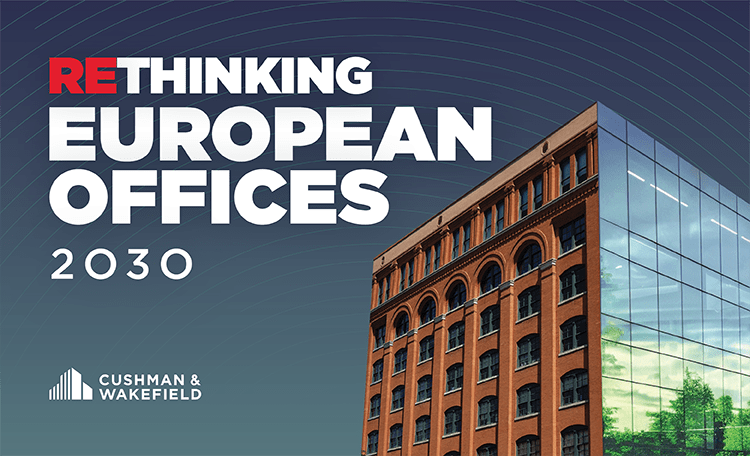According to ‘EMEA Data Centre Update H1 2025’ by Cushman & Wakefield, a global real estate consultancy, the operating capacity of EMEA data centres amounted to 10.3 gigawatts (GW) at the end of the first half of 2025, representing an increase of 21 per cent within twelve months. In addition, 2.6 GW is under construction and 11.5 GW is in the planning stage, bringing the total pipeline to 14.1 GW, corresponding to an annual growth rate of 43 per cent. This means that the total capacity of data centres in the EMEA region will rise to 24.4 GW in the foreseeable future.
The report confirms the continued dominance of the FLAPD markets (Frankfurt, London, Amsterdam, Paris and Dublin), which now also include Milan. These six ‘powerhouse’ markets account for over 45% of the region's operating capacity and almost half of its development pipeline. London remains the largest market in EMEA, with 1,189 megawatts (MW) in operation and a further 1,678 MW in the pipeline.
While these core markets continue to play a central role in the region's digital infrastructure, growth is increasingly shifting to emerging and developing locations. Cities such as Oslo, Helsinki, Lisbon and Berlin are gaining momentum, supported by improved infrastructure, regulatory reforms and rising demand for AI and cloud services. The Middle East and Africa are also experiencing rapid growth, with Johannesburg, Abu Dhabi and Riyadh among the fastest-growing markets.
Laura Shepherd, EMEA Data Centre Advisory at Cushman & Wakefield, said: ‘The keywords sustainability and security are shaping the market. Operators have to deal with complex planning conditions, land and electricity shortages, and increasingly stringent environmental standards, which are driving up costs and delivery times. Despite these challenges, investor confidence remains strong, and significant capital is flowing into both established and emerging markets.”
The report also includes Cushman & Wakefield's latest EMEA Data Centre Maturity Index, which assesses 31 markets based on 15 parameters, including inventory, hyperscaler presence and built capacity. The index divides markets into four categories: Powerhouse, Established, Developing and Emerging. It provides an outlook on growth potential and helps investors and developers identify strategic opportunities across the region. During the first half of 2025, Lisbon rose from ‘Emerging’ to ‘Established’ thanks to the 1.2 GW Start Campus project. Stockholm has also achieved ‘Established’ status, while Lagos and Athens have been upgraded to “Developing”. Groningen/Eemshaven in the Netherlands has also been included in the index for the first time as a ‘Developing’ market.
Germany: The Frankfurt region accounts for two-thirds of Germany's total capacity.Despite dynamic growth in the Berlin region, for example, the greater Frankfurt metropolitan area remains by far the number one market in Germany. When looking at total capacity (facilities already in operation, under construction and planned), the region accounts for more than two-thirds (72%) of the total capacity in Germany (3.06 GW) with 2.2 GW. Equinix, NTT, Digital Realty and CyrusOne are leaders in terms of operating capacity, while several players have strong development pipelines, including CloudHQ. However, the market is increasingly being slowed down by restrictions on land, electricity and regulation. Progress is being made in urban projects: Equinix plans to supply around 1,000 households with surplus heat from three data centres in western Frankfurt from 2025 onwards. At the same time, peripheral heat recovery projects are being delayed due to infrastructure deficits and a limited customer base.
Connectivity is being further expanded. The Frankfurt-Vienna dark fibre route planned for December 2025 will offer even lower latency between key European economic centres, supporting AI, cloud and media workloads.
Simon Jeschioro, Head of Capital Markets & Investment Advisory and Head of Alternative Investments Germany at Cushman & Wakefield: "Despite strong demand, 2024 saw fewer new projects launched than at any time in several years. This reflects the impact of complex regulation and critical bottlenecks in electricity supply and land availability. Land availability in the Frankfurt metropolitan area is likely to be virtually exhausted for the foreseeable future, partly because city policy now only allows new construction in certain clusters in peripheral districts. This pressure is accelerating demand in alternative markets such as Berlin, Munich, Hamburg and Düsseldorf, although these markets also face challenges in terms of electricity supply and land availability."
Current developments in the data centre market in the Rhine-Main region
One of the most important transactions in the first half of 2025 is the planned purchase of a 5.5-hectare plot of land in Hochheim by Kauri CAB. It has also been confirmed that Vantage Data Centers acquired a 14-hectare site in Groß-Gerau for data centre development back in 2022.
In Hanau, CyrusOne is currently building FRA5, its fifth data centre in the Frankfurt area, with a planned IT capacity of 54 MW on approximately 18,000 m² of technical space. The shell construction was completed in January 2025 – a delay to the first 9 MW phase originally planned for Q3 2024. An updated schedule has not yet been published. The facility is to be powered entirely by renewable energy and will feature around 2,500 m² of green facades.
In March 2025, Digital Realty opened its new FRA18 data centre with 16 MW of power in a listed building in Digital Park Frankfurt-Fechenheim (former Neckermann site).
EdgeConneX plans to build a campus with two data centres in Heusenstamm by 2027, covering a total area of 57,000 m². The investment volume amounts to around 600 million euros; the facility will be operated with green electricity and via a new power line from Dietzenbach.
FirstColo is developing a 24 MW data centre in Rosbach vor der Höhe by 2027, also with 100% renewable energy and an investment volume of around 250 million euros.
In Mainz, Green Mountain and KMW are jointly constructing the sustainable data centre project ‘Green Rocks’ with up to 54 MW of power on an area of 25,000 m². The first construction phase was completed in early 2025.






